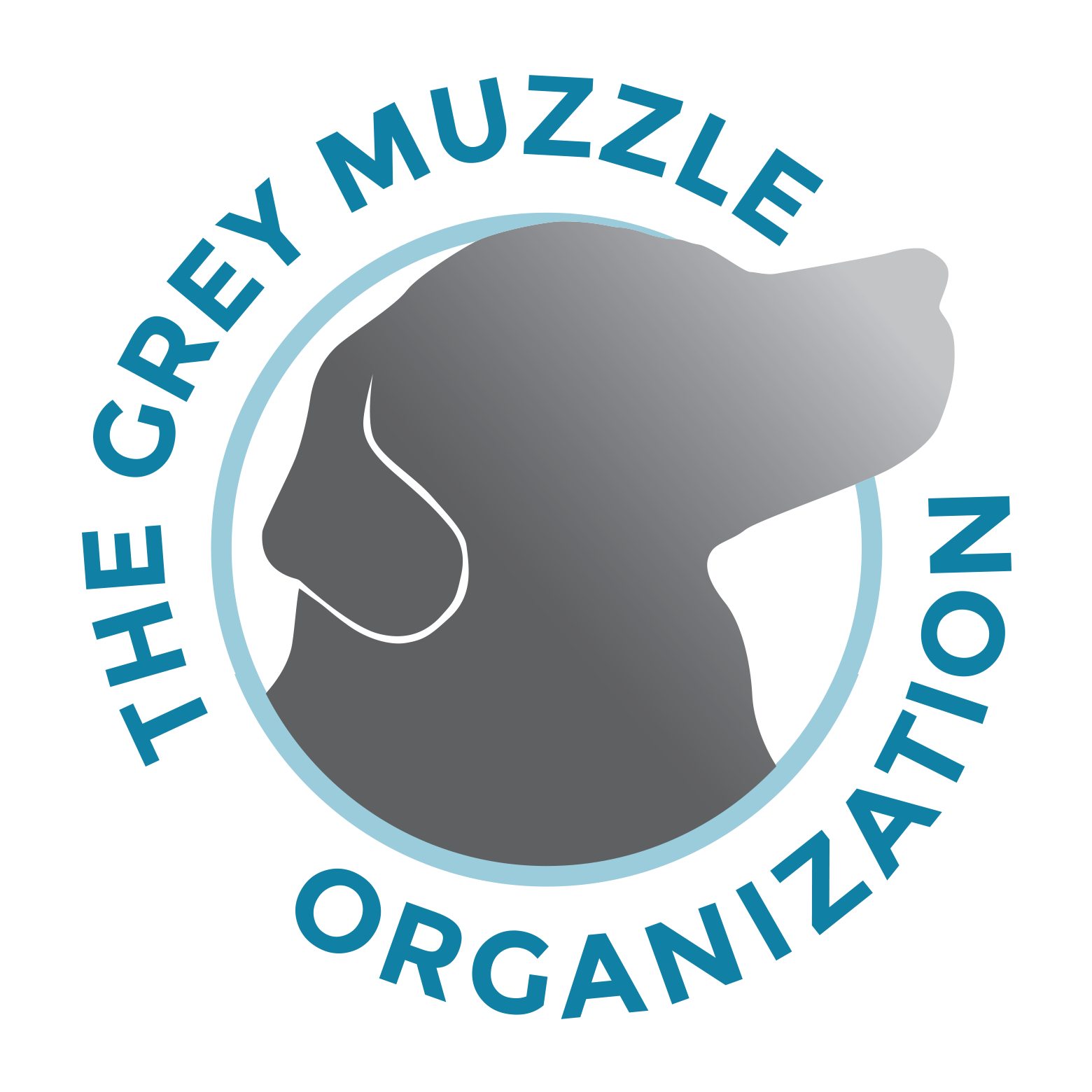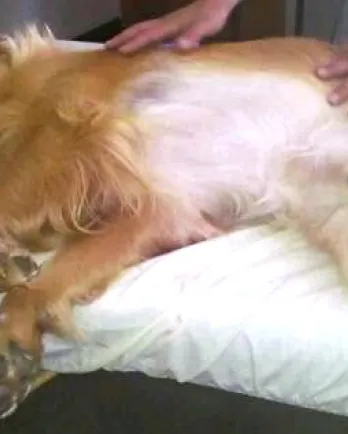Massage Options for Your Senior Dog by Jennifer Kachnic
This post contains excerpts from the article "Canine Massage and Bodywork Options" by Jennifer Kachnic, President of The Grey Muzzle Organization and Certified Canine Massage Therapist. The entire article can be read in her book Your Dog's Golden Years – Manual for Senior Dog Care.
Touch. Dogs love it. They thrive when they are touched.
No wonder when touch is applied in a therapeutic way—commonly called “bodywork”—it can help senior dogs enormously. Bodywork improves circulation, stimulates the immune system, promotes physical and mental relaxation, alleviates depression and reduces stress (yes, dogs have stress, too; chronic pain wears on them, and changes in their environment, particularly with senior dogs, can cause great anxiety). All of these contribute to the dog’s healing and bring nourishment to the dog’s body while flushing out toxins. Bodywork can also break down adhesions in the dog’s body, allowing damaged muscles to heal and improve range of motion.
The Benefits of Massage
One of the most common forms of bodywork therapy is massage. It’s no surprise this is so popular. After all, who doesn’t love a massage? When done correctly, massage not only feels good, but it leaves the body relaxed and gives an overall sense of well-being. Massage for companion pets is currently a growing field. We all know everyday touch can bring our dogs comfort, but massage does much more than this: It triggers a response of the dog’s nervous system, signaling the dog’s body to heal itself. Massage focuses on the soft tissue of the body, including the muscles. It plays an important role in post-surgery and post-injury rehabilitation, as well as in the treatment of more chronic conditions, such as arthritis. Dogs with hip dysplasia, hygroma (a false bursa that occurs over boney areas and pressure points) arthritis, allergies, swollen joints and even dry, flaky skin can benefit from regular massage. Gingivitis (red inflamed gums) can also be treated with gentle, circular massage to the gums, which increases circulation.
What to Expect
When working with senior dogs, the therapist will perform a more thorough assessment of the dog’s body than they might in younger animals at each massage to look for any changes, including any increased or decreased signs of tension or soreness. For some aging dogs, the massage sessions may need to be shorter and more frequent.
The massage can be performed on the floor with a soft dog bed or on a massage table. Most dogs prefer the floor; however, some like massage tables—tables are easier on the practitioner. It is important not to allow the dog to jump off the table on his own as injury can occur.
Overall body palpations should be done at each massage. The therapist will evaluate the dog for hot or cold areas, adhesions, tight fibrous bands of muscles and abnormalities, such as new lumps on the dog’s body. An assessment should also include evaluation of the dog’s gait and postural distortions.
Types of Massage
Three different types of canine massage are commonly used on senior dogs:
Trigger-point massage utilizes a hands-on technique similar to that in acupressure. The massage begins like any other, with a scanning of the body for areas of tenderness that need healing. Once these points are located on the dog, the therapist will apply gentle pressure for 5 to 15 seconds and then lighter pressure to release the muscles and alleviate pain. This massage should be done by a trained massage therapist, one who is particularly adept in locating and releasing these trigger points. These are tender points on the dog and can be extremely sensitive if the area is pressed too firmly.
Therapeutic massage is relaxing, promotes general well-being, boosts the immune system and increases circulation and muscle tone. It can be performed for many medical issues. Unlike trigger point massage, which focuses on specific pressure points, therapeutic massage involves long strokes and kneading techniques used on the muscle layers, which causes toxins to be released from the tissues and supplies nutrients to the muscles. This is a great massage for making dogs more comfortable and creating a better overall quality of life for them.
Sports massage is utilized for the healthier, active senior dog. This massage is more intense than the others. A bit more pressure is used. A pre-sports massage is done before exercise. It is designed to prevent injuries by warming up the dog’s muscles, which increases blood flow. The post-sports massage loosens the muscles and circulation after exercise, helping to prevent stiffness and soreness in the dog.
Dogs have different needs than humans do, so it is important that the trained canine massage therapist be well versed in the anatomy and physiology of dogs before working on areas that have been stressed or injured. Without this knowledge, it is possible to make problems worse or even cause new injuries.
After just one or two sessions of any of these hands-on treatments, you should see immediate, positive results in your dog.
You can find the full article and many more great articles about senior dog care in Your Dog's Golden Years – Manual for Senior Dog Care by Jennifer Kachnic. The book is currently part of a giveaway drawing for donors to our end-of-the-year campaign.
The information presented by The Grey Muzzle Organization is for informational purposes only. Readers are urged to consult with a licensed veterinarian for issues relating to their pet's health or well-being or prior to implementing any treatment.
The Grey Muzzle Organization improves the lives of at-risk senior dogs by providing funding and resources to animal shelters, rescue organizations, sanctuaries, and other nonprofit groups nationwide.



